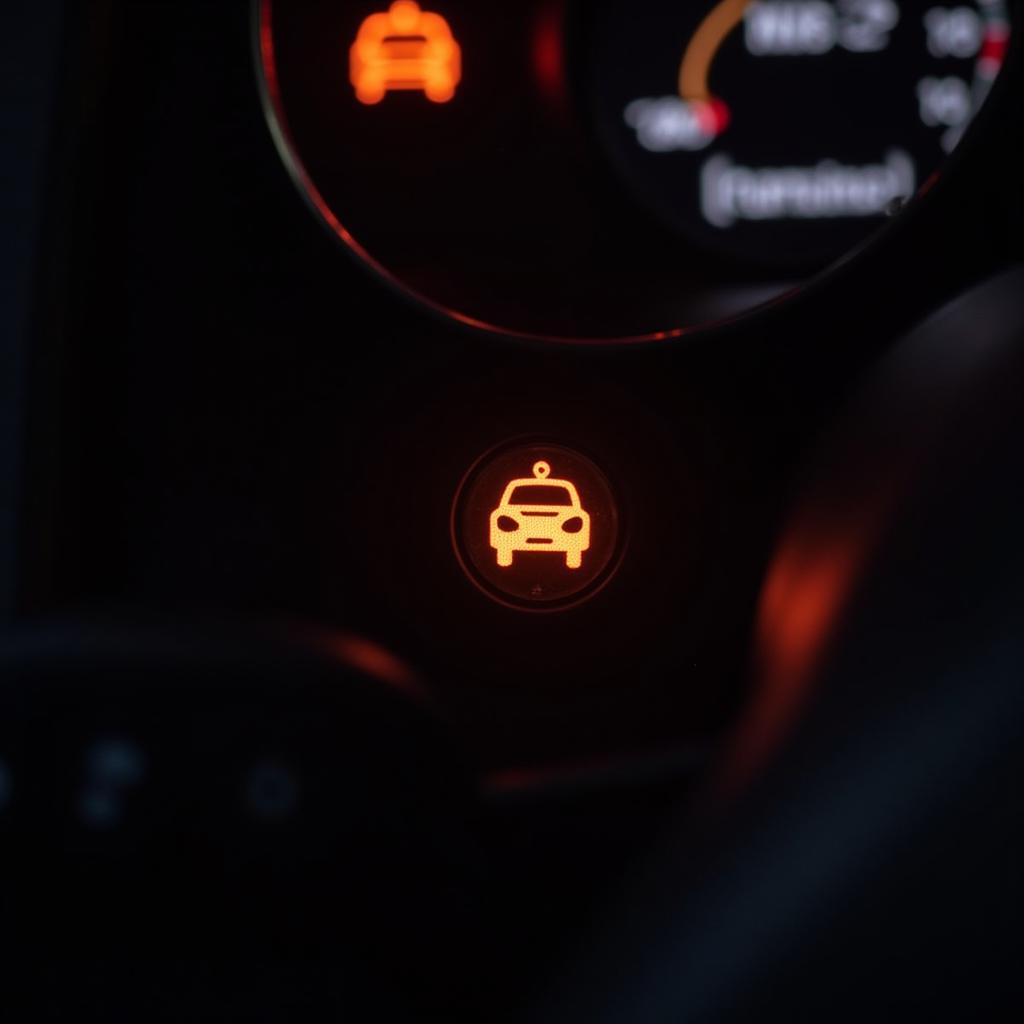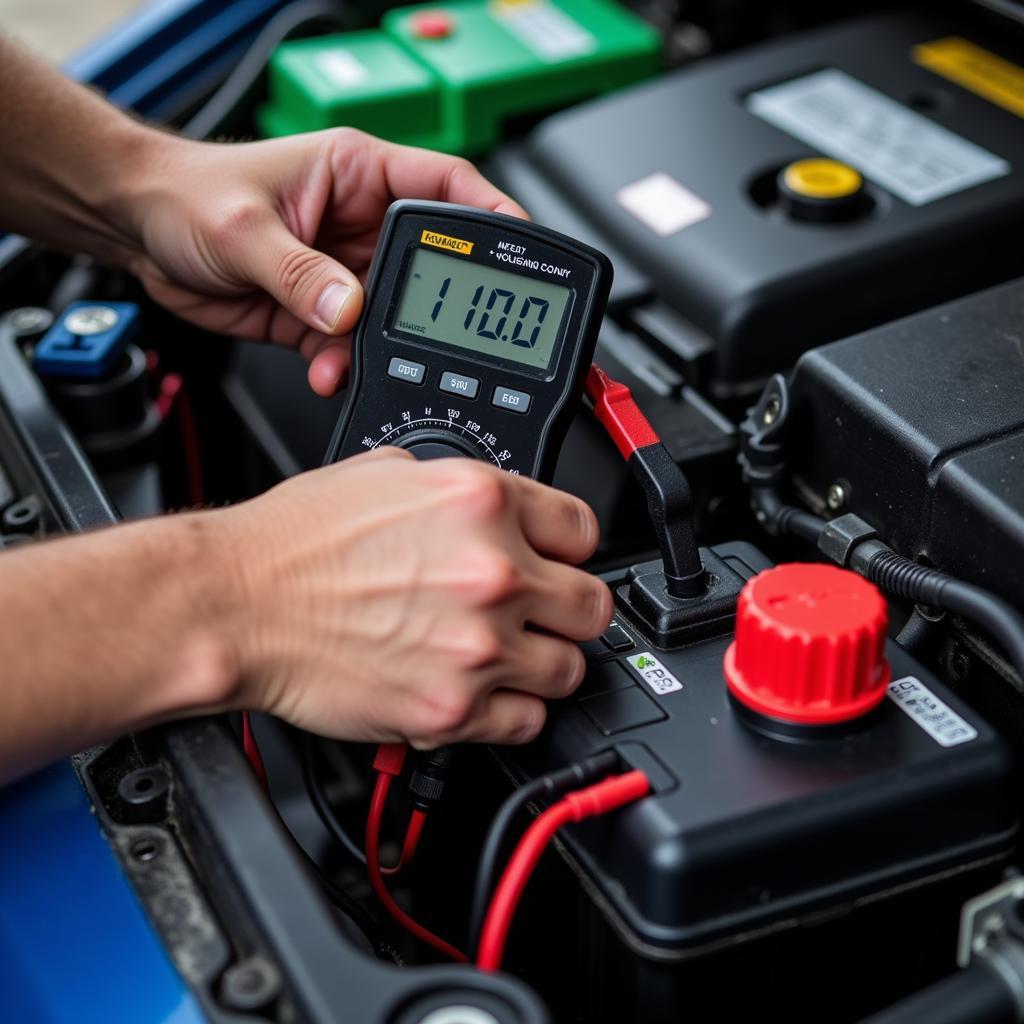That pesky anti-theft light flashing on your dashboard can be a real headache. It can prevent you from starting your car and leave you stranded. This article dives deep into the common causes of an illuminated anti-theft light, providing you with the knowledge and tools to troubleshoot and potentially resolve the issue. We’ll cover everything from faulty key fobs to wiring problems and even software glitches, empowering you to take control of the situation.
Understanding why your anti-theft light is activated is the first step to resolving the issue. It’s a crucial component of your vehicle’s security system, designed to deter theft by disabling the engine’s starting system. When this system detects a potential threat, it triggers the anti-theft light and prevents the car from starting. Want to learn more about anti-theft devices? Check out this article about do anti theft steering wheel locks work.
Common Causes of an Activated Anti-Theft Light
Several factors can trigger the anti-theft system in your vehicle. Let’s explore some of the most common culprits:
-
Faulty Key Fob: A weak battery or damaged key fob can disrupt the communication between the key and the vehicle’s immobilizer system. This can lead the system to believe that someone is attempting to steal the car, activating the anti-theft light.
-
Dead Key Fob Battery: A completely dead key fob battery will obviously prevent the car from starting, and often triggers the anti-theft system. Replacing the battery is a quick and easy fix.
-
Wiring Issues: Damaged or corroded wiring in the ignition system, especially around the ignition switch or the immobilizer module, can interfere with the signal transmission, causing the anti-theft light to illuminate.
-
Malfunctioning Immobilizer System: The immobilizer system itself can sometimes malfunction. This can be due to a faulty control module, a damaged antenna, or a problem with the transponder chip in the key.
-
Low Battery Voltage: A weak car battery can cause voltage fluctuations, leading to erratic behavior in the car’s electrical systems, including the anti-theft system.
-
Aftermarket Alarm System Issues: If you’ve installed an aftermarket alarm system, it might not be properly integrated with the vehicle’s factory anti-theft system, leading to conflicts and triggering the warning light. Here is a helpful guide on how to remove electronic anti theft device.
 Anti-theft Light Illuminated on Car Dashboard
Anti-theft Light Illuminated on Car Dashboard
Troubleshooting the Anti-Theft Light
Here’s a step-by-step guide to help you troubleshoot the anti-theft light:
-
Check Your Key Fob: Try using your spare key. If the car starts with the spare, the problem likely lies with the original key’s battery or the key itself. If you’re having trouble with your lug nuts, this guide on how to get anti theft lug nuts off might be useful.
-
Inspect the Ignition Switch: Carefully examine the ignition switch for any signs of damage or tampering. A loose or broken ignition switch can prevent the car from starting and activate the anti-theft light.
-
Test the Car Battery: Use a multimeter to check the battery voltage. A low voltage can indicate a weak or dying battery, which can affect the anti-theft system. You might also want to explore if a manual transmission works as anti theft devices.
-
Review the Owner’s Manual: Your owner’s manual might contain specific troubleshooting tips for your car model’s anti-theft system. This resource can sometimes help locate and even reset the anti-theft system.
 Mechanic Checking Car Battery Voltage with Multimeter
Mechanic Checking Car Battery Voltage with Multimeter
When to Seek Professional Help
If you’ve tried these troubleshooting steps and the anti-theft light persists, it’s time to consult a qualified automotive technician. Issues with the immobilizer system or wiring require specialized diagnostic tools and expertise. Here’s a useful resource on how to find the anti theft code.
“A flashing anti-theft light can be a complex issue, especially with newer vehicles equipped with advanced immobilizer systems. A professional diagnosis is often the quickest and most effective way to resolve the problem,” says John Smith, Senior Automotive Technician at Smith Automotive.
Conclusion
The anti-theft light coming on can be a frustrating experience. By understanding the common causes and following the troubleshooting steps outlined in this article, you can often identify the source of the problem. However, if the issue persists, seeking professional assistance is always the best course of action to avoid further complications and get your car back on the road quickly and safely. Remember, a properly functioning anti-theft system is crucial for protecting your vehicle.
FAQ
-
What does the anti-theft light look like? It typically resembles a car with a key or lock symbol.
-
Can I drive my car with the anti-theft light on? Usually, no. The anti-theft system is designed to prevent the engine from starting.
-
Will disconnecting the battery reset the anti-theft system? This might work in some cases, but it’s not a guaranteed fix and can sometimes create other issues.
-
Is it expensive to fix an anti-theft system problem? The cost varies depending on the specific issue. A simple key fob battery replacement is inexpensive, but more complex issues can be costly.
-
How can I prevent anti-theft light problems? Regularly check your key fob battery and ensure your car battery is in good condition.
-
Can extreme temperatures affect the anti-theft system? Yes, extreme heat or cold can sometimes cause issues with the car’s electronics, including the anti-theft system.
-
Does the anti-theft system affect car insurance? Often, having a functioning anti-theft system can lead to discounts on your car insurance premium.
